#Hess Perssons Estates
Explore tagged Tumblr posts
Text

















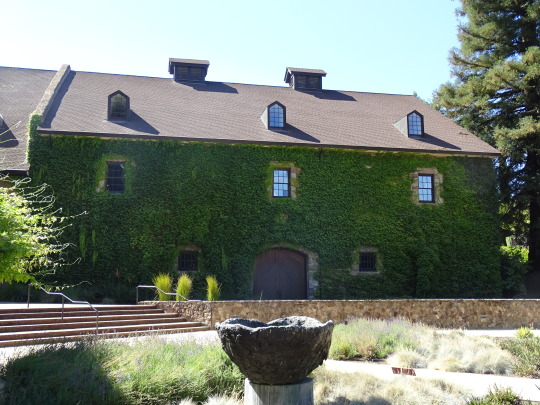



National Take the Stairs Day
National Take the Stairs Day is celebrated every second Wednesday in January. You know what that means: celebrate the day by hitting the stairs. Elevator? What elevator? If you’re interested in taking things up a notch, run around the block or cycle to work. It doesn’t matter what you do, as long as you keep that heart rate up.
Lung health is more important now than ever before. Did you know that over 3.7 million Americans live with chronic lung diseases like asthma or lung cancer? We’re not moving as much as we should. To top it, the air we breathe gets increasingly unhealthy. Some factors may be beyond our control, but staying fit and healthy is entirely in our hands. Take the first steps towards a healthier life today. What matters eventually are the choices we make.
History of National Take the Stairs Day
The first mention of Take the Stairs Day was in 2016. A dedicated stair-running group likely organized it, although there’s not much documentation on the event.
On the other hand, National Take the Stairs Day is a recent initiative by the American Lung Association. The goal is to improve our lung health by choosing a life of movement over convenience.
Stair walking is excellent exercise and one of the easiest things to do. It’s gentler on our joints and muscles compared to HIIT or gym workouts, with almost similar benefits. It’s an activity to seriously consider if you’re looking to lose weight, tone muscle, and enhance overall cardiovascular health.
Taking charge of our health can sometimes feel daunting. Where does one begin? The good news is you don’t need to make drastic alterations to your lifestyle, unless medically advised. The key lies in little but consistent steps each day. They really do go a long way. Small changes such as choosing to take the stairs instead of an elevator can significantly reduce the risk of chronic diseases.
National Take the Stairs Day hopes to encourage Americans to make changes to their lifestyle. By taking part, you also show support for the millions of people who live with debilitating lung disease. If a few minutes of climbing stairs can make your lungs explode, imagine what it’s like for those with chronic pulmonary disease. It can be a humbling reminder of how lucky we are to be alive. We hope everyone takes the stairs today and every other day.
National Take the Stairs Day timeline
8000 B.C. - 2000 B.C. The First Ornate Staircases
As human civilization progresses, the people of ancient Mesopotamia build magnificent staircases in their homes.
2016 A Day For Taking Stairs
The internet first hears of Take the Stairs Day.
2019 Backed By Science
Researchers at McMaster University find that short bursts of stair climbing throughout the day can boost cardiovascular health.
2020 A Guinness Record For Stair Climbing
On November 18, Ryoji Watanabe from Japan breaks the world record for the fastest vertical mile stair climbing, at one hour, six minutes, and 58 seconds.
National Take the Stairs Day FAQs
When is National Take the Stairs Day?
Organized by the American Lung Association, National Take the Stairs Day takes place on the second Wednesday in January each year. The association encourages Americans to improve their lung health by taking the stairs instead of an elevator.
What are the benefits of stair climbing?
Stair climbing comes with tremendous health benefits. A few minutes of stair climbing throughout the day improves lung capacity, heart function, and blood circulation. It also reduces the risks of developing chronic heart diseases, cancer, diabetes, and hypertension.
How many stairs should I climb for a good workout?
Try climbing up and downstairs on 10 to 12 steps for about 30 minutes. Climb one step at a time and progress to skipping steps once you’re comfortable. For intense calorie burn, climb up and down a 10-story building five times.
National Take the Stairs Day Activities
Take the stairs
Design a stairs-climbing challenge
Climb stairs for a killer cardio burn
Wherever you can, choose to take the stairs today. Find opportunities throughout the day: on a lunch break, coffee run, or en route to the break room.
The good thing about stairs is you’ll find them everywhere. Gather everyone for a stairs-climbing challenge at the office or apartment complex. It can be a surprising way to bond. Take care to offer support to anyone who may be struggling.
Start incorporating stair climbing into your workout. Jog up a few flights each day, increasing the pace as you go along. Level up by skipping one step or carrying a heavy backpack on your way up.
5 Facts About Exercising That Will Blow Your Mind
Let the music take control
Exercising is good for the brain
Bring on the muscles
Slows down aging
Variety is super important
Listening to music during a workout can improve performance by 15%.
Cardio-intensive exercises help create new brain cells, improving brain power and memory.
People with more muscle mass burn more fat amounts while resting.
Those who exercise for 45 minutes, three times a week can significantly reduce signs of aging.
Compared to those who cross-train, people who don’t switch up their workouts are more susceptible to injury.
Why We Love National Take the Stairs Day
It challenges us
Gratitude for our lungs
A community endeavor
The comfort of familiar things lulls most of us into complacency. When was the last time you challenged your body and mind? It’s time today to get up and move. If not now, when?
Breath is life, but we don’t notice it at all. When we take the stairs, we are reminded of how hard our heart and lungs work. That exploding sensation in the chest? It means we’re alive.
Staying fit and healthy can be a lonesome road. National Take the Stairs Day recognizes the importance of the community's rallying around better health. It’s easier when everyone’s in it together.
Source
#Urban Staircase#Calgary#Edmonton#Alberta#Yellowknife#Northwest Territories#cityscape#travel#National Take the Stairs Day#8 January 2025#NationalTaketheStairsDay#original photography#Second Wednesday in January#vacation#landmark#tourist attraction#Fort Vermillion#West Yellowstone#Montana#USA#Canada#summer 2024#Domaine Carneros#Beringer Vineyards#Freemark Abbey Winery#Napa Valley#California#Hess Perssons Estates#St. Francis Winery & Vineyards#architecture
1 note
·
View note
Text
Napa Mountain
We crawled out from under in the gently sloping gravel. The whole thing lay dying, somewhat askew to the shoulder with the gentle smell of rubber, oil, and black steel assembly. Germe had a little spittle foaming on the corner of his mouth. You OK? Yeah. I’m good–I think? You’re bleeding. I wiped my forehead. Yeah, just a scratch. What happened? I dunno, man… just something went loose there in…

View On WordPress
#2011#Best wine reviews#Cabernet#Cabernet Sauvignon#Central Coast Critic#Hess Persson Estates#Hess wine#HJess cab#Mount Veeder#Napa cab#Napa Valley#soif#Soif Wine Blog#Stephen McConnell#Stephen McConnell Wine Blog#Steve McConnell#Steve McConnell Wine Blog#The Hess Collection#wine1percent
0 notes
Text
A Sneak Peek Into BIG SKY PACKAGING’s Tour to Napa & Sonoma

BIG SKY PACKAGING, a renowned name in wine packaging solutions, just concluded an inspiring tour to California’s iconic Napa and Sonoma regions. The team stayed in the regions from March 17th to 23rd and had meetings with many of the wine industry’s respected clients, delivering tailored guidance on packaging strategies that merge innovation, sustainability as well and craftsmanship.

This visit marked another compelling chapter in BIG SKY PACKAGING’s long-standing collaboration with the region’s prominent wineries and vineyards. Known for fostering brand stories through custom packaging, the team engaged in insightful conversations, worked on ongoing projects, and introduced many fresh, bold ideas to assist consumers in standing out on shelves and in cellars alike.

“Our time in wine country is always about more than packaging,” stated Erin S. Dutton, President of BIG SKY PACKAGING. “It’s about comprehending each vineyard’s brand journey and developing packaging that reminisces about its story and vision. This trip was full of significant dialogue, innovative exploration, and the kind of face-to-face association that sparks lasting impact.”
With a list of clients that includes acclaimed names such as Stags Leap Cellars, Trefethen, Seven Apart, Donum Estate, Ellman Family Vineyards, Cakebread, Hess Persson Estates, Simon Family Vineyards, and many more, BIG SKY PACKAGING is all set to lead the way in bespoke wine packaging solutions. The team’s every visit in Napa and Sonoma—now a regular fixture for over a decade—is no less than a testament to their commitment to keeping the region’s growing needs with next-generation packaging expertise.

“Each visit fills us with energy,” added Dutton. “From revisiting beloved client projects to going through new concepts that push boundaries, we left the region with renewed inspiration and excitement for what’s ahead.”
About BIG SKY PACKAGING
BIG SKY PACKAGING, a known packaging partner, brings world-class packaging solutions to life that go well with aesthetic excellence and functional performance. With a team of skilled packaging engineers and a substantial focus on sustainability, BIG SKY PACKAGING allows brands to make packaging that grabs identity, tells a story, and pulls engagement in competitive markets.
Did you miss connecting with us during our Napa & Sonoma trip? You can still reach out. Let’s talk and bring your packaging vision to life.
Original Source - https://bigskypackaging.com/news-events/a-sneak-peek-into-big-sky-packagings-tour-to-napa-sonoma/
0 notes
Text
























Goats Cheese Day
Oh, cheese lovers, gather ’round for a tale of creamy delight! Every year on this day, we celebrate something truly special — a day dedicated to the tangy and irresistible world of goat cheese or, as it is called in French, chèvre.
Yes, you heard it right—Goat Cheese Day is a time to revel in the rich and creamy goodness that comes from our caprine friends.
This day is not just about indulging in cheese; it’s a journey through history and flavor. Goat cheese, with its roots tracing back to ancient times, has been a staple in diets across the globe for thousands of years. Its unique flavors and textures have made it a favorite among food enthusiasts and chefs alike.
How to Celebrate Goat Cheese Day
When Goat Cheese Day rolls around, it’s your cue to get cheesy with gusto! Here are some whimsical yet utterly delightful ways to mark this occasion, inspired by a blend of ideas and the spirit of celebration found across our sources:
Host a Cheese Tasting Bash – Why not gather your pals for a goat cheese tasting? Make it fun by blindfolding guests and having them guess the cheese types. Laughter is guaranteed when someone mistakes chèvre for cheddar!
Embark on a Cheesy Adventure—Find the nearest goat farm and take a tour. Seeing those adorable goats and learning how your favorite cheese is made add layers to your appreciation. Plus, are the samples fresh from the source? Yes, please!
Craft Your Cheese – Roll up your sleeves and make some goat cheese at home. It’s easier than you think and gives you bragging rights at your next dinner party. “This cheese? Oh, I made it myself.”
Goat Cheese in Every Meal – Challenge yourself: Can you incorporate goat cheese into every meal of the day? Goat cheese pancakes for breakfast, a tangy goat cheese salad for lunch, and a goat cheese-topped pizza for dinner. Dessert? Goat cheese ice cream!
Cheese and Chill – Have a cozy night in with your favorite movies and a goat cheese platter. Pair different types of goat cheese with fruits, honey, and a good bottle of wine. It’s a simple pleasure that feels like a treat.
Spread the Cheese Love – Share the joy of goat cheese with friends and family. Gift them a small basket of assorted goat cheeses. It’s a unique gift that introduces them to the flavors of Goat Cheese Day.
Cheese Art – Get creative and use goat cheese as your medium. Create cheese sculptures or simply arrange a beautiful cheese board. Snap a photo, share it on social media, and watch the likes roll in.
Remember, it’s not just about eating cheese; it’s about celebrating the rich, tangy, and utterly delightful world of goat’s cheese. So, on this day, let your cheese flag fly high and savor every creamy, dreamy bite!
Why Celebrate Goat Cheese Day
From the crumbly feta to the smooth and spreadable chèvre, goat cheese adds a special touch to any dish, be it a simple salad or a gourmet meal.
But why do we celebrate this day? Well, it’s not just for the love of cheese. Goat Cheese Day highlights the versatility and nutritional benefits of goat’s cheese, which is lower in fat and calories compared to cow’s milk cheese, making it a healthier option for cheese lovers.
It’s a day to support local farmers and cheesemakers who pour their skills and passion into crafting these delightful cheeses. By exploring different varieties, hosting tastings, or even trying to make your own goat’s cheese, you’re participating in a tradition that celebrates creativity, culinary exploration, and, of course, the joy of eating cheese.
So, let’s raise our forks (and maybe a glass of wine) to goat cheese. Whether you’re a seasoned cheese connoisseur or new to the world of goat cheese, there’s no better time to dive into the flavors that make goat’s cheese a true culinary treasure.
Spread the word, share your favorite goat’s cheese dishes, and make Goat Cheese Day a celebration!
History of Goat Cheese Day
Goat Cheese Day has a unique story that takes us back to 1998. This was when the American Cheese Society and a French cheese producer, Bongrain, teamed up. They had a goal in mind: to shine a spotlight on goat cheese.
Their idea was to celebrate this cheese’s unique taste and health benefits. Goat cheese is not just any cheese; it’s known for its tangy flavor and creamy texture. Plus, it’s healthier than many other cheeses, being lower in fat and calories.
The journey of goat cheese itself starts much earlier, around 5000 BCE in ancient Greece. Back then, people discovered the delightful taste of cheese made from goat’s milk.
This cheese stood out for its sour and tangy flavor, thanks to the natural curdling of goat’s milk. Over the years, different countries developed their versions of goat’s cheese, making it a global favorite.
Goat Cheese Day is more than just an annual celebration. It’s a tribute to the diverse and rich flavors of this unique cheese. It also supports the hardworking farmers and cheesemakers who craft this delicious cheese.
From the creamy feta to the firm halloumi, goat cheese varieties are enjoyed worldwide. This day encourages us to explore and appreciate the wide range of goat cheeses available.
Goat Cheese Day FAQs
What is the historical significance of goat cheese in ancient civilizations?
Goat cheese dates back to ancient times. Nomadic tribes in the Middle East first domesticated goats over 9,000 years ago, relying on them for milk and cheese.
These early cheeses were simple, made by curdling goat’s milk and pressing the curds. The Greeks and Romans later embraced goat cheese, incorporating it into their diets and culinary traditions.
How do different cultures incorporate goat cheese into their cuisines?
Goat cheese features prominently in various global cuisines. In France, it’s used in salads and tarts.
In Greece, goat cheese varieties like feta are essential in dishes such as spanakopita and horiatiki. Mexican cuisine includes queso de cabra in tacos and enchiladas. Each culture adapts goat cheese to its unique culinary traditions.
What are some common myths about goat cheese?
A prevalent myth suggests that all goat cheese has a strong, gamey flavor. In reality, the taste varies based on factors like the goat’s diet, cheese age, and production methods.
Fresh goat cheese tends to be mild and creamy, while aged varieties develop more robust flavors.
How do people around the world celebrate Goat’s Cheese Day?
Celebrations vary globally. In France, cheese-tasting events feature local goat cheeses.
In the U.S., restaurants may offer special goat cheese dishes. Cheese-making workshops and farm tours are popular, allowing enthusiasts to learn about production and sample fresh cheeses.
What are some unique varieties of goat cheese from different regions?
The Loire Valley in France produces Valençay, a pyramid-shaped cheese with an ash coating. Spain offers Garrotxa, a semi-hard cheese with a nutty flavor.
Norway’s Brunost is a brown, caramel-like goat cheese enjoyed in thin slices. Each region’s cheese reflects its local traditions and environment.
What are the health benefits of consuming goat cheese?
Goat cheese is easier to digest than cow’s milk cheese due to its lower lactose content and different protein structure.
It’s rich in calcium, essential for bone health, and contains beneficial probiotics that support gut health. Additionally, goat cheese provides healthy fats and is a good source of vitamin A.
How has goat cheese production evolved over time?
Traditional goat cheese-making involved simple curdling and pressing methods.
Modern production incorporates advanced techniques to ensure consistency and safety, such as pasteurization and controlled aging environments.
Despite technological advancements, many producers maintain artisanal methods to preserve traditional flavors and textures.
What are some creative culinary uses for goat cheese?
Beyond salads and cheese boards, goat cheese enhances various dishes. It can be whipped into spreads, baked into pastries like tarts, or used as a pizza topping.
Its creamy texture complements desserts, pairing well with fruits and honey. Goat cheese also enriches sauces, adding depth to pasta dishes.
How does the aging process affect the flavor and texture of goat cheese?
Fresh goat cheese is soft, creamy, and has a mild flavor. As it ages, it loses moisture, becoming firmer and developing a more pronounced, tangy taste.
The rind that forms during aging can introduce earthy or nutty notes. Aging transforms the cheese’s characteristics, offering a range of sensory experiences.
What role does goat cheese play in sustainable agriculture?
Goats require less land and water than cows, making them suitable for sustainable farming practices.
They can graze on diverse vegetation, aiding in land management and reducing the need for chemical interventions.
Producing goat cheese supports small-scale farmers and contributes to agricultural biodiversity.
Source
#tomato melon salad with feta#Tapas Amiundo#the best salad I've ever had#cheese board#Feta#olives#Manchego#Louis M. Martini Winery#Goat Cheese Salad#Goats Cheese Day#restaurant#wine tasting#USA#Spain#25 June#travel#original photography#vacation#landscape#animal#goat#summer 2022#2021#Sonoma Valley#Napa Valley#tourist attraction#Three Cheese and Spinach Dip#Taco Salad#I don't like goat cheese that much#Hess Persson Estates
2 notes
·
View notes
Text






























Longest Day (Summer Solstice)
The Longest Day (Summer Solstice) is observed on either June 20, 21, or 22, but this year, it falls on June 20/21. The timing shifts because it depends on when the Sun reaches its northernmost point from the celestial equator.
It signals the start of astronomical summer. As a result, the days get shorter as summer progresses, first gradually but then at increasingly larger daily intervals as the September equinox approaches and ushers in the beginning of fall. Because the Sun travels across the sky in its most elongated path during the summer solstice, that day has the most daylight hours.
History of Longest Day (Summer Solstice)
The day of the summer solstice, which occurs when the Sun is at its farthest distant point from the equator, is also the day that is considered to be the longest of the year. Since the Neolithic era, this day has been observed as the summer solstice, also known as the summer’s midpoint. In the Neolithic cultures of Northern and Central Europe, the dates of the crop cycles were associated with the summer solstice. People in Celtic, Slavic, and Germanic cultures traditionally celebrated it by lighting bonfires to bolster the Sun’s vigor for the duration of the crop season and ensure a healthy harvest.
Numerous Neolithic stone circles appear to have been constructed around the Sun’s movement at solstices. However, because there are no written accounts from this time period, determining the exact purpose of these rock edifices is difficult. On the other hand, the stones appear to be carefully positioned to align with the Sun’s movements, framing solar motion on the summer and winter solstices.
Stones at specific solstice axes were even hammerstones to frame the sunrise for those standing in the center of the circle. This suggests that the alignment of the stones with the Sun’s motions was intentional. The summer solstice was regarded as a significant cultural event in many ancient communities, and it is still regarded as such by some modern groups.
Longest Day (Summer Solstice) timeline
2500 B.C.Stonehenge's Unique Stone Circle
There is a belief that the distinctive stone circle at Stonehenge determines the precise time of the summer solstice in June.
1500 B.C.First Sundial
Ancient Egyptians develop the "shadow clock" — a portable gadget that monitors time throughout the day.
293 B.C.Sundial in Rome
According to Pliny, a Roman author, naturalist, and natural philosopher, the first record of a sundial being in Rome dates back to 293 B.C.
17th CenturyPocket sundial
The pocket sundial, the forerunner of the pocket watch, becomes very popular during this period.
Longest Day (Summer Solstice) FAQs
In what ways is the Summer Solstice linked to our mood?
The Summer Solstice marks the official start of summer in many parts of the world, which could positively impact health in the form of greater sleep and a happier disposition. People often feel better and are happier during this time of year.
What is the spiritual significance of summer?
The Summer Solstice serves as a bittersweet reminder that nothing lasts forever. We inhabit a realm where everything undergoes a continual cycle of rebirth and decay. When we keep in mind that the things we cherish don’t remain forever, we can cherish them much more while still physically present.
The solstice is observed by which religion?
Today, the solstices are almost exclusively celebrated by Pagans. Litha, the most major Pagan celebration, begins on the eve of the Summer Solstice and celebrates the power of the Sun God and the midsummer solstice.
How to Observe Longest Day (Summer Solstice)
Enjoy the outdoors
Look at the stars
Create a bucket list for the summer
Eat outside and enjoy the beauty of the world around you. An outdoor gathering might be joyous, but a change of location can be just as enjoyable. Get the family together and visit a park or the beach for a barbecue or a picnic.
You can stay up and gaze at the stars. If this is your first time, you can borrow a book or download an app to assist you in spotting the constellations.
Create a summer bucket list with your loved ones. Is there anything else you'd like to see on the list? Let your imagination run wild with a poster board and markers.
5 Interesting Facts About Solstice
Origin of the name
Winter and Summer Solstice
Tropic of Cancer and Capricorn
Curved path
Sunrise and sunset hours are the same
The word ‘solstice’ originates from the Latin words ‘sol,’ which means ‘Sun,’ and ‘stitium,’ which means ‘standing.’
As there is the Summer Solstice, there is also a Winter Solstice, which occurs twice a year and is also known as the Longest Night.
In the Northern Hemisphere, the Summer Solstice occurs when the Sun is directly overhead the Tropic of Cancer, whereas in the Southern Hemisphere, the Winter Solstice occurs when the Sun is directly above the Tropic of Capricorn.
During the Summer Solstice, the Sun's route across the sky is curved, not a straight line.
Although Summer Solstice is the day with the most daylight hours, it does not have the latest sunset or the earliest sunrise.
Why Longest Day (Summer Solstice) is Important
It has significant cultural meaning
It is the longest day of the year
It signals the beginning of longer nights
Ancient societies and some current ones held the solstice as a significant cultural occasion, and it is still an occasion that is celebrated today. Why not take the day to celebrate an ancient historical occasion?
Who doesn’t love a long day? Today is the longest day, and you get to soak up more sun while enjoying the day with family and friends.
This day marks the beginning of astronomical summer and the moment at which days begin to shorten and nights begin to lengthen. Longer nights equal more sleep, and who doesn’t love to feel well-rested.
Source
#St. Francis Winery & Vineyards#BBQ#Domaine Carneros#Beringer Vineyards#Brix Restaurant & Gardens#California#USA#travel#original photography#vacation#tourist attraction#20 June 2025#longest day#Summer Solstice#SummerSolstice#first day of summer#landscape#21 June 2025#it depends where you are#Canada#Hess Persson Estates#Banff National Park#Glacier National Park#landmark
2 notes
·
View notes
Text






























California was admitted as the thirty-first U.S. state on September 9, 1850.
California Admission Day
California Admission Day is observed on September 9 each year. It commemorates the day California was admitted into the Union as the 31st state in 1850 after it was ceded to the United States by Mexico in 1848. California became one of the few states to become a state without first being an organized territory. California Admission Day is not a federal holiday. Rather, it’s a local observance in the state, which implies that businesses, schools, and government offices remain open. In times gone by it was celebrated with great pomp and ceremony with parades and pageantry. Though low-key now, the day still marks an important part of Californian history.
History of California Admission Day
The Mexican-American War began in May 1846 when the U.S. declared war on Mexico. American settlers who lived in the territory of California in Mexico revolted against the Mexican government in what is known as the Bear Flag Revolt. The Americans captured Sonoma, hoisted a Bear Flag in the area, and declared it the California Republic. On July 9, 1846, Navy Lieutenant Joseph Warren Revere arrived in Sonoma and replaced the Bear Flag in the territory with a United States flag. Lieutenant Revere officially declared California a possession of the United States. In February 1848, Mexico and the U.S. signed the Treaty of Guadalupe Hidalgo to end the war. This treaty meant that Mexico had to yield a large portion of its Southwest territory — including present-day California — to the U.S.
As of the signing of the treaty, California had a meager population that was not up to the 60,000-inhabitant benchmark a territory needed to achieve statehood. Earlier in January 1848, gold was discovered on the American River near Sacramento, and the territory witnessed a massive influx of immigrants looking for work and good fortune. Thanks to the Gold Rush, a huge increase in population and wealth followed, thus necessitating the need for civil government and local policies.
In 1849, Californians demanded statehood, and California became the 31st state on September 9, 1850. California joined the Union as a free, non-slavery state by the Compromise of 1850 in just about two years of the territory’s incorporation. Its first capital was in San Jose before it was moved to the city of Vallejo for lack of necessary facilities. The capital was later moved to Benicia, a small town, and subsequently to the riverside port of Sacramento in 1854.
California Admission Day timeline
1846
The Bear Flag Revolt
American settlers in California stage a revolt against Mexican authorities.
1848
A Treaty for Peace
The United States and Mexico sign the Treaty of Guadalupe Hidalgo to end the war between the countries.
1850
The Compromise of 1850
The Compromise of 1850 is signed and California is admitted as the 31st state to the Union.
1911
Adoption of the California State Flag
The California State Flag, based on the original Bear Flag, is adopted by the state legislature.
California Admission Day FAQs
Is California Admission Day a federal holiday?
California Admission Day is not a federal holiday. It’s a local observance in the state of California. Schools, businesses, and government offices remain open.
What are other names for California?
California is also known as ‘The Golden State, ‘The Land of Milk and Honey,’ ‘The El Dorado State,’ and ‘The Grape State.’
What is California famous for?
California remains one of the most popular destinations throughout North America. The state is especially famous for Hollywood, Disneyland, and the Golden Gate Bridge. Other unique landmarks in California include Coachella, Silicon Valley, the Wine Country, and Surf Culture.
California Admission Day Activities
Visit the Golden StateIf you’re a history buff, today’s the perfect day to visit California. Museums around California offer various resources and artifacts to help you learn more about the state’s rich history. Take a day trip or make a holiday of it and travel to more than one.
Enjoy the special eventsCalifornia Admission Day is observed with special events at schools, museums, and organizations throughout the state. Public officials often grant special addresses about its history and significance.
Take a trip to SonomaCalifornia Admission Day has been observed particularly in the Sonoma area since 1850. It would be nice to visit the area where it all began. Don’t forget to enjoy the state’s beautiful beaches, valleys, and mountains as you celebrate with them!
5 Fun Facts About California
Originally named “the Grizzly Bear State": California has renamed the Golden State from its initial name “the Grizzly Bear State” as the bears went extinct.
The state motto is ‘Eureka!’: The Greek word means “I have found it!” and alludes to the discovery of gold in the Sierra Nevada.
Redwood is the official state tree: California’s official state tree is the redwood, as designated in 1937.
It’s called ‘The Grape State’, too: Over 300,000 tons of grapes are grown in California annually, and the state produces more than 17 million gallons of wine each year!
Blue jeans: In 1873 blue jeans were imported for miners from Europe, making San Francisco the first place in the U.S. where jeans were worn.
Why We Love California Admission Day
Becoming a recognized state in the U.S.This event celebrates the day California officially became a state in the U.S. It was a protracted struggle but thanks to the peace treaty that ended the Mexican-American War of 1848, it was a done deal.
A tribute to the war heroesThe struggle to acquire California as a possession of the U.S. was not an easy one. It took a war, diplomacy, protests, and legislation to make it possible. This day celebrates the memories of everyone who fought to make it possible.
The population boost that came with the Gold RushCalifornia’s low population would have hindered its prospects to become a state and admittance to the Union. Thanks to the Gold Rush, the territory was able to have the 60,000 inhabitants it needed to achieve statehood.
Source
#Caples Lake#Red Bluff#Hess Persson Estates#Mount Shasta#California#31st US State#9 September 1850#Pacific Ocean#San Francisco#Sierra Nevada#Yosemite National Park#Morro Bay#Sonoma#San Diego#Humboldt Redwoods State Park#Los Angeles#Death Valley National Park#travel#original photography#vacation#tourist attraction#landmark#architecture#cityscape#landscape#USA#Lake Tahoe#Santa Monica#anniversary#US history
7 notes
·
View notes
Text

















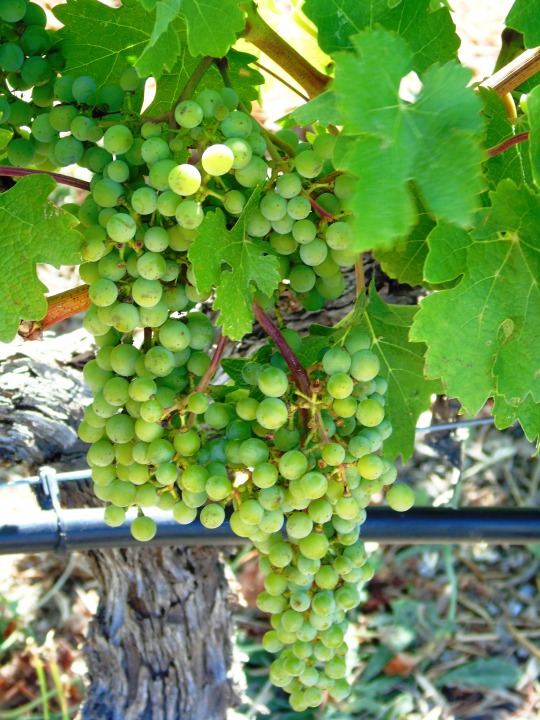







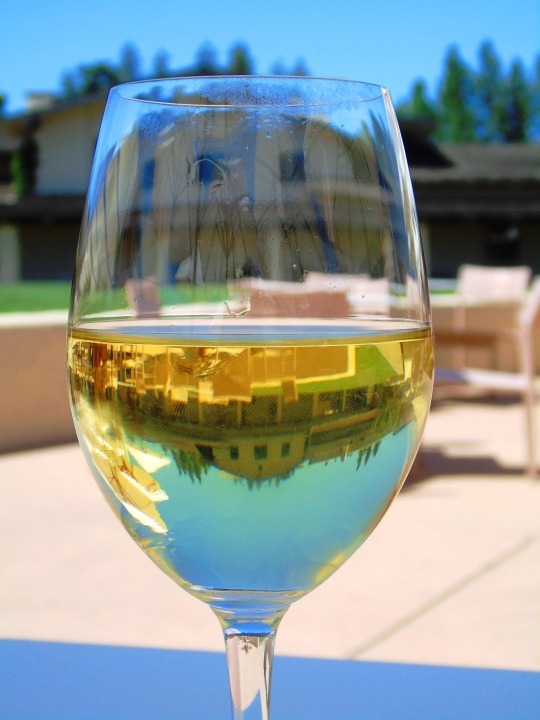
Sauvignon Blanc Day
Sauvignon Blanc Day is celebrated in New Zealand and other countries around the world on May 6 and it’s a day dedicated to tasting and enjoying Sauvignon Blanc wine. Restaurants and wine tasters promote the event on social media, giving out suggestions of meals that pair with the wine and other tasting tips for beginners and even experts in the wine community. Read on to learn more about this popular white wine that is bound to grace any celebratory occasion.
HISTORY OF SAUVIGNON BLANC DAY
Wine has been a part of humanity and its traditions since ancient times. It’s estimated that the first production of wine dates back to 7000 B.C. in China. Traditionally, this drink was made from fermented grapes, which can stay up to a few years in a keg fermenting the perfect blend. There are many varieties of wine grapes, such as Cabernet Sauvignon, Malbec, Merlot, and Chardonnay. However, wine can also be produced from fermented honey, starch, and other fruits, such as apples or cherries.
Not only was wine an important beverage to ancient people because of its antioxidant properties, but because water wasn’t well treated at the time, it was common for the main drink in a household to be wine. There is also religious importance to this drink. In Christianity, for example, wine is considered a symbolic representation of the blood of Christ. In the Catholic tradition, the congregation takes wine with the Host every Sunday Mass in memory of the blood and the body of Christ.
Wine tasting has also been a part of the culture for a long time. Around the fourteenth century, methods of experimentation were developed for tasters in Europe. Theories about how humans taste and smell have been useful for tasters to learn how to recognize different grapes and even regions and prices of certain wine bottles.
SAUVIGNON BLANC DAY TIMELINE
7000 B.C.
The First Production of Wine
The first-ever documented production of wine happened during this time period.
Fourteenth Century
First Wine Tasting Developments
The first few developments of taste and scent theories for wine tasting spread around Europe.
1976
The Wine Tasting Verdict
French wine tasters blind-taste wine from California and France and vote for U.S. wine as better.
2010
The first Sauvignon Blanc Day
Celebrations to mark the first Sauvignon Blanc Day are held.
SAUVIGNON BLANC DAY FAQS
When should I take Sauvignon Blanc?
Early. Remember to also keep it in the fridge for a bit so it’s nice and chill to drink!
What is special about Sauvignon Blanc?
It’s very acidic and citric in comparison to other wines.
Is Sauvignon Blanc only from New Zealand?
Other places make Sauvignon Blanc, but the one in New Zealand is considered to be the best one.
SAUVIGNON BLANC DAY ACTIVITIES
Drink some wine: Get yourself a bottle of Sauvignon Blanc. Go ahead, enjoy it either by yourself or by sharing it with friends or family!
Visit a vineyard: If you’ve got some time to spare, why not visit a vineyard near your home and try some fresh wine? This should be a fun exertion.
Gift someone a bottle of wine: If you’re not a big fan of wine yourself, you can always get a bottle and gift it to that one wine-loving friend. We all have that friend in our group!
5 INTERESTING FACTS ABOUT WINE
It has many different types: There are over 10,000 varieties of wine grapes around the world.
It is European produced: The producers of wine are France, Spain, and Italy which makes wine a European drink.
It is gotten from specialty grapes: You cannot make wine by fermenting the grapes you buy at the supermarket.
It’s important to keep wine securely stored: If left open for too long, it gets spoiled. That’s why wine needs to be in sealed bottles.
It is a healthy option: A glass of wine a day prevents cardiac disease and gives a dosage of antioxidants.
WHY WE LOVE SAUVIGNON BLANC DAY
We get to drink lots of wine: What better day to indulge in some fine wine than Sauvignon Blanc day? It’s the perfect excuse!
It brings friends together: If your friends are like us, then they love wine. You will probably be able to bring everyone together for a wine tasting party!
We get to try wine from all over: If you’ve never had wine from New Zealand, this is the perfect day to try some since the best Sauvignon Blanc comes from there! Go on, take a sip and savor this delicacy.
Source
#National Sauvignon Blanc Day#NationalSauvignonBlancDay#USA#6 May#International Sauvignon Blanc Day#Robert Mondavi Winery#Napa Valley#summer 2024#I really love the last pic#Brix Restaurant and Gardens#white wine#don't drink and drive#grape#Beringer Vineyards#California#vacation#landmark#tourist attraction#travel#original photography#cityscape#Oakville#Sonoma Valley#St. Helena#Louis M. Martini Winery#Hess Persson Estates
4 notes
·
View notes
Text















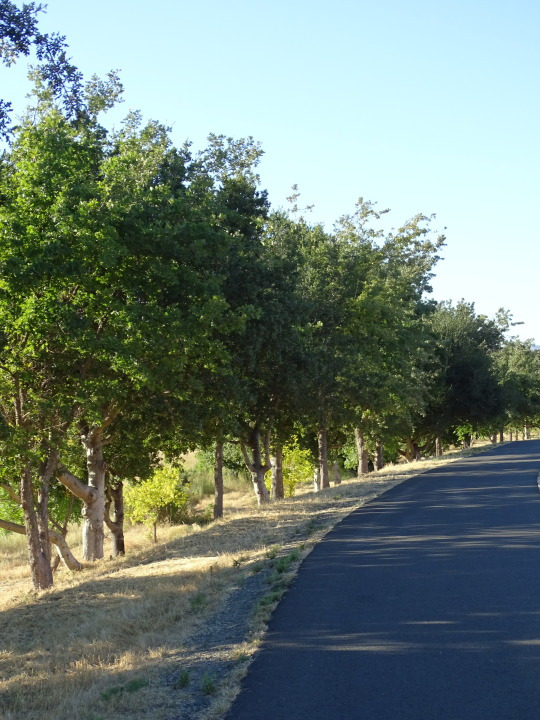



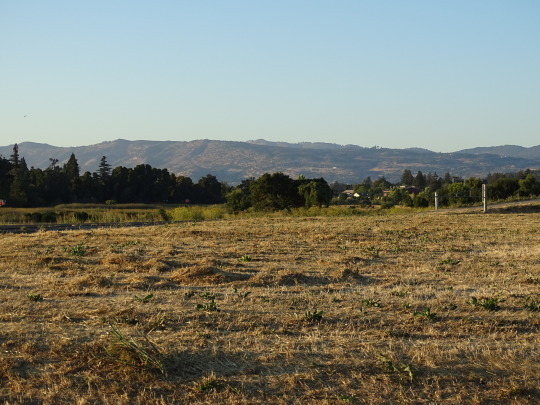





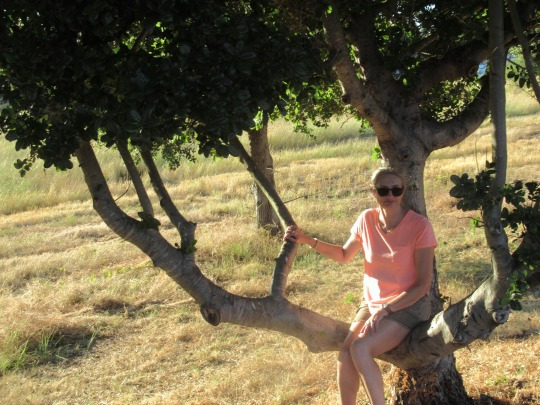



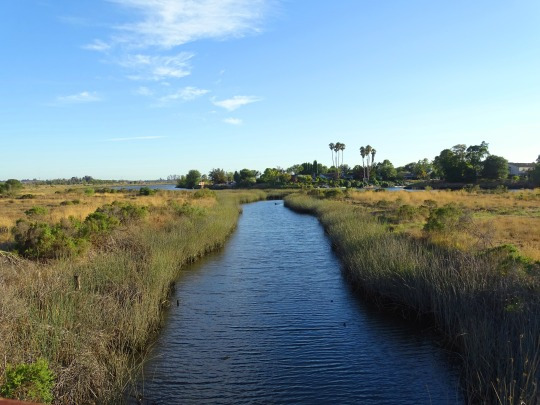
Napa was incorporated on March 23, 1872.
#Napa River Bridge#Napa Mill#Veterans Memorial Park#Napa River#Napa#incorporated#23 March 1872#anniversary#US history#small town#tourist attraction#landmark#travel#summer 2019#2021#911 Memorial Garden by Gordon Huether#Domaine Carneros#Hess Persson Estates#vineyard#landscape#countryside#original photography#vacation#architecture#don't drink and drive#California#USA#cityscape
5 notes
·
View notes
Text





















National Knife Day
Grab or pull out your knives! Today we celebrate them, no matter their size, style, or brand! It is unknown who started National Knife Day or when they started it, but it was being celebrated by at least 2011. It is also unknown why the observance takes place on August 24, but one explanation appears to be that the date is connected to the Bowie knife. It was on this date in 1838 that Rezin Bowie, the brother of the knife’s namesake, wrote a letter to the Planters’ Advocate claiming he was the person who had created the knife.
One of the earliest tools known to humankind, the knife was present at the beginnings of the development of human civilization and came out of the need for survival. Early on, knives were used as primitive tools for digging and construction, as weapons, and to hunt, fish, and gather food. In contrast to today, almost everyone carried a knife. The first knives were made of stones which were cracked to make a sharp edge like a blade. Sharpened stone tools became more advanced during the late Lithic periods, and then even more so during the Copper and Bronze Ages. Metal blades appeared, which weren’t as sharp and didn’t stay sharp as long as the stone blades that preceded them. This led to the introduction of sharpening stones.
During the Iron age, tools became stronger and more durable. Iron knives came on the scene and stayed sharper longer. Steel blades followed iron ones, and not much has changed since then. Steel blades, which are made of an alloy of iron that has carbon, are the most common today and are known for being durable and efficient. Cobalt alloys and titanium are also used in knife making today.
Early knives didn’t have a separate handle and blade—they were all one piece. Eventually, handles began being made out of carved bone, wood, and metal, and then, rare materials like mother-of-pearl and tortoiseshell began being used. Today, wood is one of the most popular materials used for knife handles, and metals like stainless steel are also common. One other change besides that advent of a separate handle was the invention of the folding knife.
Knives have many different purposes in the present day, some of which are the same as they have been for thousands of years. Some ways they are used are to prepare food, as a utensil when eating food, by surgeons and medical professionals, to dress an animal, to fillet a fish, and for carving. There are various types of kitchen knives such as the chef’s, utility, paring, and bread knives. Most knives are affordable to just about anyone, but there are high-end custom knives such as Randall Made Knives, most of which sell for $400 of more. In many locations, there are laws that pertain to knives: ownership laws exist for certain types of knives, open and concealed carry laws apply to certain types of knives, and other types of laws exist, such as those that say a robbery is an “aggravated crime” with more severe punishment if a knife is involved. There also are certain areas where some types of knives are not permitted, such as at schools or on planes.
How to Observe
Knives should be used more today than on any other day of the year. Here are a few ideas on how to spend the day:
Do some knife throwing.
Do some whittling.
Prepare some food using a knife or multiple knives. It might be beneficial to first learn what type of knife is appropriate for different types of food.
Get a pocket knife, which has many uses.
Check for knife promotions such as giveaways and sales happening today. This is often a large part of the day.
Give someone a knife as a gift.
Clean, oil, and sharpen your knives.
Carry your knives around in a holster.
Cut a lot of things with your knives, such as food, paper, and rope.
Source
#National Knife Day#USA#Canada#Germany#Schnitzel-Himmel und Erde#food#restaurant#travel#vacation#original photography#Fire Jumper Burger#steak#filet#burger#bread#cookie#NationalKnifeDay#24 August#Jacobs & Co. Steakhouse#Louis M. Martini Winery#St. Francis Winery & Vineyards#Hess Persson Estates#Fried Green Tomatoes
6 notes
·
View notes
Text

Overgrown
What do you think about my pic?
#travel#original photography#vacation#tourist attraction#landmark#nature#summer 2024#California#Bay Area#West Coast#photo of the day#Hess Persson Estates#What do you think about my pic?#tree#fir#pine#wine tasting#excellent wine#USA#architecture#cityscape#4411 Redwood Road
6 notes
·
View notes
Text



















Zinfandel Day
Zinfandel Day is celebrated on November 17 every year, and we’re going to show you how you can indulge in the excitement. Zinfandel is a type of black-skinned grape that is typically used for making wines. The grapes are known for their high sugar content, which is useful for making wines with an alcohol percentage of more than 15%. The Zinfandel, also known as Primitivo, grows best in a warm but not too hot climate. Its taste varies, depending on the ripeness of the grapes. Zinfandel Day was created in the United Kingdom to give recognition to this exquisite variety of grapes.
History of Zinfandel Day
It is said that the Zinfandel grapes were discovered in the Mediterranean region around 6000 B.C. Shortly after that period, winemaking became prevalent. Zinfandel was found in parts of Croatia, but a lot of the plantation was wiped out by the phylloxera epidemic. The Zinfandel’s genetic structure closely resembles that of Primitivo, which was found in Italy in the 1800s. It was first recognized by the European Union that Primitivo would be a synonym for Zinfandel in 1990. Today both Zinfandel and Primitivo are used interchangeably.
In 1930, Zinfandel agriculture was affected greatly, first by the Great Depression and then by the Prohibition that followed. By the 1960s, Zinfandel was already being referred to as the “lost vine and wine.” In 2002, the Crljenak Kaštelanski variety was discovered in Croatia, and winemakers started mixing Zinfandel and Crljenak Kaštelanski. Soon after, the wine production again rose to prominence. The wines were made mostly in parts of Puglia or Lodi (Croatia).
The Zinfandel Advocates and Producers were formed in the United States for “the preservation, education, and appreciation” of the Zinfandel grapes. Zinfandel Day was created to show love and appreciation toward the Zinfandel grape and the wines produced from it, namely Rombauer, Artezin, Pedroncelli, and Robert Biale. Wine lovers also held Zinfandel tasting days in San Francisco. Zinfandel Day quickly spread to Europe, especially the United Kingdom. It became a day of celebrating one of the world’s most favorite vines and wines.
Zinfandel Day timeline
6000 B.C. Zinfandel Grapes are Discovered
Zinfandel grapes are discovered in the Mediterranean region.
1880 Primitivo is Born
Primitivo, a close relative of the Zinfandel grapes, is found in Italy.
1930 Zinfandel is Almost Extinct
Zinfandel production suffers greatly because of the Great Depression and Prohibition.
1990s Zinfandel Day
Zinfandel Day is created by the Zinfandel Advocates and Producers (ZAP), to honor Zinfandel grapes and the wines made from them.
Zinfandel Day FAQs
How many wine days are celebrated?
There are about 17 national wine day celebrations — from simple wine-drinking days to more specific wine celebrations such as Mulled Wine Day, Zinfandel Day, and Sauvignon Blanc Day.
What does Zinfandel wine taste like?
The taste of the Zinfandel wines depends on the ripeness of the grapes. It might be sweet, semi-sweet, or dry.
What is the difference between Merlot and Zinfandel?
Merlot adds a plummy flavor to the wine. Zinfandel has a rich blackberry/raspberry or pepper flavor and is less bitter compared with the Merlot.
Zinfandel Day Activities
Drink Zinfandel wines
Share it on social media
Read more about Zinfandel grape history
What better way to celebrate Zinfandel Day than to taste some exotic Zinfandel wines? Pour yourself a glass of Zinfandel wines such as Rombauer or Artezin and enjoy the juicy, sweet taste of Zinfandel grapes. Enjoy your drink with friends and family.
Let everyone know that you're celebrating this day. Take pictures of you enjoying some Zinfandel wine with friends and share them on social media. You can also write articles on the origins of Zinfandel grapes and post them online.
Use this day to improve your knowledge. Read more about the historical origins of the Zinfandel grapes — how they were discovered, and how they became one of the most loved grape varieties among wine lovers.
5 Facts About Zinfandel That Will Blow Your Mind
It is used in cranberry sauce
It is a heritage grape
It has wings
White Zin was created in 1972
Austria brought Zinfandel to the U.S.
Zinfandel grapes are sometimes used to give the cranberry sauce a spicy flavor.
The Zinfandel grape is considered by the people of California to be their heritage grape.
The Zinfandel grapevine always has a side branch growing outwards that gives an appearance of a wing.
White Zin was created by the Sutter Home in 1972.
It is said that the Zinfandel was brought to the U.S. by Croatia, under Austrian rule.
Why We Love Zinfandel Day
We appreciate Zinfandel grapes and wines
It gives us an occasion to come together as a family
We improve our knowledge
Zinfandel grapes are some of the most popular grape varieties on the planet. Yet, we feel as though they do not get the recognition they deserve. Zinfandel allows us to appreciate this magnificent variety of grapes and the tasty, high-quality wines produced from them.
This day is to be celebrated with friends and family. Zinfandel Day gives us the chance to invite neighbors or family members over for a few glasses of Zinfandel wines, and a chance to bond with each other.
This is also a day of learning. This day allows us to learn more about the origins of Zinfandel grapes and wines. We learn about how the zinfandel grape almost went to extinction but survived and became one of the most popular red wine grapes on the planet.
Source
#Sonoma Valley#Napa Valley#California#wine tasting#USA#don't drink and drive#St. Francis Winery & Vineyards#Beringer Vineyards#Freemark Abbey Winery#Turnbull Wine Cellars#Louis M. Martini Winery#Brix Restaurant & Gardens#Zinfandel Day#17 November#ZinfandelDay#travel#original photography#vacation#tourist attraction#Hess Persson Estates#other red wines too#summer 2024
4 notes
·
View notes
Text

















Cabernet Franc Day
Cabernet Franc is a good red wine to pair with a wide variety of delicious foods. But, even though it has this whole day dedicated to it, it’s one of the lesser-known Cabernets and many people still have questions! What does it pair well with? What are its origins?
To learn these and other interesting answers, get ready to head over to France to discover more about what Cabernet Franc Day is all about!
History of Cabernet Franc Day
Cabernet Franc is believed to have been established in the Libournais region of southwest France sometime in the 17th century when Cardinal Richelieu transported vine cuttings to the Loire Valley.
These previous vine cuttings were planted at the Abbey of Bourgueil under the care of an abbot named Breton, whose name became associated with the grape. By the 18th century, plantings of Cabernet Franc (known as Bouchet) were found throughout Fronsac, Pomerol, and St. Emilion, with the intention of turning them into quality wines.
As Cabernet Sauvignon grew more popular in the 18th and 19th centuries, the close similarity of the two grapes was observed and theories emerged as to the extent of their relationship. In 1997, DNA evidence emerged to show that, at some point, Cabernet Franc had crossed with Sauvignon blanc to produce Cabernet Sauvignon. Experts believe that this happened by chance and were simply accidental cross-contamination, rather than a planned event.
Records of Cabernet Franc in Bordeaux go back to the end of the 18th century, although it was believed to be planted in the Loire long before that time. DNA analysis also indicates that Cabernet Franc is one of two parents of Cabernet Sauvignon, Merlot, and Carmenere, in addition to being a parent of Malbec.
Cabernet Franc is one of the major black grape varieties worldwide. It is principally grown for blending with Cabernet Sauvignon and Merlot in the Bordeaux style, but can also be vinified alone as in the Loire’s Chinon.
Cabernet Franc is lighter than Cabernet Sauvignon, making a bright, pale red wine that contributes finesse and lends a peppery perfume to blends with more robust grapes.
This wine has a unique taste that is a bit spicy and contains a medium to high level of tannins and acidity (although it tends to be lower in tannins and acids than Cabernet Sauvignon). Depending on the growing region and style of wine, additional aromas can include tobacco, raspberry, bell pepper, cassis, and violets. It might also come with some tart notes that sit alongside hints of berries and plums.
Although they originated in France, Cab Franc grapes are now grown in most wine-producing countries all over the globe, and are mostly used with other grapes to make blended wines.
In recent years, Cabernet Franc is experiencing a lovely renewal of interest in North America, including places such as Washington, California, New York, and even up north in Canada.
How to Celebrate Cabernet Franc Day
The obvious way to celebrate this day is to raise a glass of Cab Franc wine as a toast to its uniqueness! Try out these ideas for celebrating, whether on your own or with a group of friends:
Drink Cabernet Franc Wine
To celebrate Cabernet Franc Day, the first course of action should, of course, be to have a glass of Cabernet Franc while enjoying a wonderful home-cooked meal. Pairing a fine wine like Cabernet Franc with a home-cooked meal is not only a good way to spend an evening, but it is also a good way to make an evening date all more romantic. Try it with a plate full of grilled steaks or chops, a lovely piece of salmon, or for a vegetarian option, go for portobello mushrooms, peppers and olives.
For a larger gathering, use Cabernet Franc when throwing a house party so everyone can raise their glasses to their successes and their loved ones. When the party has settled down, it’s a great wine to have while chatting with friends and family.
Learn More About Cab Franc Grapes and Wine
Impress friends and family members by learning a little bit more about this wine in celebration of Cabernet Franc Day. This little grape packs a power punch as one of the twenty most widely planted grapes in vineyards throughout the world!
Try out these facts and bits of trivia that will keep folks entertained while working to uncork that bottle of Cab Franc:
Cabernet Franc wine can be aged for up to 15 years if it is a high quality version of the wine.
Known as the “third grape of Bordeaux”, the Cab Franc grape can be found in many of the finest top Bordeaux wine blends in the world.
The most common Cabernet Franc wines can be found in three well-known villages: Chinon, Bourgeuil and Samur-Champgny.
Cabernet Franc might seem as if it is not very popular because many people haven’t necessarily heard its name. But that’s because it goes by quite a variety of different names and aliases, including Aceria, Breton, Burdeas Tinto, Capbreton Rouge, Grosse Vidure, Kaberne Fran, Messanges Rouge, Noir Dur, Petit Fer, Plant Des Sables, Trouchet Noir, and many more!
Take a Trip to France
Go to the place where it all began by scheduling a trip to visit Libournais. Loire Valley, the beautiful wine region, can be found in the central region of France, along the Loire River. It’s easily accessible from Paris and would even be a fun day trip from the country’s capital.
Source
#Hess Persson Estates#Sonoma Valley#Napa Valley#California#wine tasting#USA#don't drink and drive#St. Francis Winery & Vineyards#Beringer Vineyards#Freemark Abbey Winery#Cabernet Sauvignon#Turnbull Wine Cellars#Louis M. Martini Winery#Brix Restaurant & Gardens#travel#original photography#vacation#tourist attraction#summer 2024#Cabernet Franc Day#4 December#red wine#CabernetFrancDay
5 notes
·
View notes
Text

Perfect Pairing
What do you think about my pic?
#travel#original photography#vacation#tourist attraction#landmark#nature#summer 2024#California#Bay Area#West Coast#blue sky#clouds#photo of the day#Hess Persson Estates#What do you think about my pic?#tree#fir#pine#cheese board#wine tasting#don't drink and drive#excellent wine#excellent cheese board#USA#architecture
3 notes
·
View notes
Text






























Look for Circles Day
Look for Circles Day is celebrated on November 2 every year. A circle is a shape where all the points in the shape are equidistant from a given point, which makes the center. This holiday is celebrated across the country and is a day set aside to look for circles in the world around us. The day is meant to be a fun activity for kids and adults alike. In addition to being a fun day outside, the day helps young children learn to identify shapes, which is an important part of their development.
History of Look for Circles Day
Look for Circles Day is an opportunity to take your kids out and spend time looking for circles in everyday life and in nature — whatever your surroundings may be. Very simply, a circle is a closed curve, and it is a shape that can be found in everyday objects and nature. A circle is a shape where all the points in the shape are on the same plane and are equidistant from a single point in the middle, which is known as the center of the circle. Circles may also be defined as a type of ellipse or a closed curve that has two regions — an interior and an exterior.
Look for Circles Day is not only a great way to encourage children to look for shapes in the world around them, but it is also great for encouraging children to pay more attention to their surroundings and appreciate the world around them. Shape recognition is an important aspect of participating in the world around us, and encouraging children to look for shapes strengthens their capacity to identify shapes and patterns in their environment. Circles are an easy shape to start with since they are one of the easiest shapes to find and identify in the modern world and nature.
Circles are used extensively in art as well, and many cultures have used the circle to represent important values and ideas artistically. Rotation, revolution, and other circular movements are important to everyday life, and as a result, the circular shape can be found easily in modern life. Circles and spheres are also easily seen in nature — from the rings on tree trunks to drops of water.
Look for Circles Day timeline
1700 B.C. Formula to Devise Area of a Circle
Ancient Egyptians work on a formula that could allow them to approximate the area of the circle.
353 B.C. The Circle is Defined
Plato writes “Seventh Letter,” and in it, defines and explains the circle and its shape.
300 B.C .Properties of Circles Explored
Euclid writes his mathematical treatise Elements, and explore the properties of circles in it.
1880 π Proved to Be Transcendental
German mathematician Carl Lindemann solves the issue of squaring the circle by proving π is transcendental.
Look for Circles Day FAQs
Why are circles important in life?
Circles are important for mobility and symbolism — as circular shapes like wheels help us get around and circles symbolize harmony.
Why do we find circles so beautiful?
The perfect symmetry and smooth shape of circles makes them beautiful to humans.
Where do we find circles?
Circles can be natural or man made, but natural circles are usually imperfect circles.
Look for Circles Day Activities
Make circle shaped food
Organize a community game
Go for a circular drive
A great way to help everyone look for circles is to make the circles yourself. Bake cakes and cookies, cut up cucumber and carrots and share them with your family and friends.
Get everyone in your community together for a fun game of looking for circles. Make your own rules up — like only finding perfect circles, or only circles from nature, and get exploring.
Head out for a long drive in your neighborhood — but make sure your route makes a perfect circle. Track your route on maps and share it on social media.
5 Facts About Circles That Will Blow Your Mind
Circle refers to the boundary
It’s the most symmetric shape
A circle in every triangle
It’s present in the word encyclopedia
People naturally walk in circles
The term refers to the boundary or the line that connects the equidistant points. The whole shape is called a disc.
Every line through the center of the circle is a line of reflection symmetry.
The circles inside triangles are called incircles and each of the sides is a tangent to the circle.
The circle in the word encyclopedia is cycle, and the word means circle of learning.
Without navigational cues, people could walk in circles forever.
Why We Love Look for Circles Day
It’s a fun activity
Keep our kids busy
Circles are fascinating
We love the idea of making a game out of looking for circles. We think it's fun to look for shapes in the world around us.
We think that this day is a great way to get kids outside and busy. We love that we can set up an activity that keeps kids engaged and helps them grow.
We love how easy and interesting it is to find circles in art and nature. We think that the shape is fascinating and love spending a day celebrating it.
Source
#Twin Falls#vacation#travel#Canada#summer 2024#original photography#USA#Look for Circles Day#2 November#LookForCirclesDay#tourist attraction#cityscape#Vulcan#Calgary#Edmonton#Yellowknife#Peace River#Fernie#World's Largest Tandem Axle Truck#Missoula#Red Cliff#Hess Persson Estates#Montana#British Columbia#California#Alberta#Northwest Territories#Louis M. Martini Winery#Beringer Vineyards#Brix Restaurant & Gardens
2 notes
·
View notes
Text

Standing Tall
What do you think about my pic?
#Sequoia#redwood#flora#travel#original photography#vacation#tourist attraction#landmark#nature#summer 2024#California#Bay Area#West Coast#blue sky#clouds#photo of the day#Hess Persson Estates#What do you think about my pic?#tree#fir#pine
2 notes
·
View notes
Text


















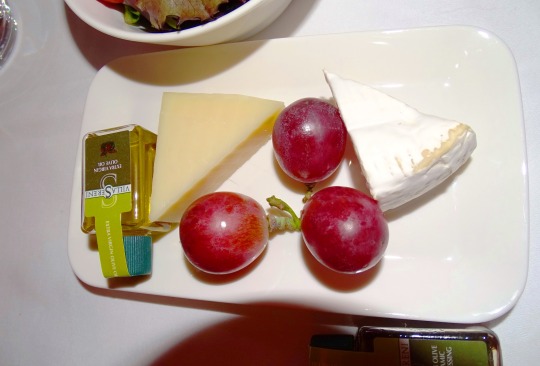











National Cheese Day
June 4 is National Cheese Day. Not to be confused with other popular cheese related holidays like grilled cheese day, cheesecake day, or mac and cheese day. This day is in reverence of the queen of all dairy, the big cheese.
When is National Cheese Day 2024?
Cheese and its many varieties are celebrated on National Cheese Day on June 4.
History of National Cheese Day
Cheese making is an ancient, some might even say sacred, craft. So ancient in fact it predates recorded history. It is speculated that the magic of cheese making began somewhere around 8000BCE shortly after the domestication of animals. Archeological digs have found evidence of cheese around the world including strainers coated in milk-fat molecules in Kuyavia, Poland dated around 5500BCE, murals in Egypt dated at 2000BCE, and an artifact of preserved cheese in Xinjiang, China believed to be more than 3,000 years old! European Imperialism took their styles of cheese through Asia, sub saharan Africa, and eventually to the Americas.
The most popular cheese of all is (obviously) mozzarella. This delicious and pizza topping cheese was first created near Naples from the rich milk of water buffalos. At the time, it rarely left its home near Naples, as it was made from pasteurized milk, and a lack of refrigeration meant it had a very short shelf life. As both cheese technology and refrigeration systems advanced, this delicious cheese left the southern region of Italy and found itself traveling around the world.
There are two types of mozzarella produced within the United States — low moisture and high moisture. Low moisture mozzarella has a moisture content less than 50% while high moisture has a content of over 52%. Low moisture is made specifically for transportation and mass production as the lack of moisture gives it a longer shelf life.
Today, cheese dishes can be found on every continent served savory, sweet, melted, deep fried, and even chilled in ice cream. This household staple can still satisfy any craving after thousands of years.
National Cheese Day timeline
1815 Industrial Revolution
First large scale industrial cheese production begins in Switzerland.
1851 Mass production
Jesse Williams, a farmer, is credited with being the first to have an assembly-line of cheese production in Rome, New York.
1939-1945 Goodbye Mom and Pop
Factory made cheese surpasses the production numbers of traditional farm raised cheeses during World War II.
1982 Mama Mia
The Mozzarella Company was founded in Dallas to bring fresh Mozzarella to America.
By The Numbers
4% – the percentage of all cheese being sold that ends up stolen. 1,400 pounds – the weight of a block of cheddar cheese delivered to the White House once by President Andrew Jackson. 2 – the hours it took for 10,000 visitors to the White House to finish the block of cheddar cheese. 17th century – the period in which they started dyeing cheese orange to fool people into thinking it was higher quality. ½ – of the total cheese consumption in the world is of Gouda cheese. 1,000 – the estimated number of different French cheeses. 1615 B.C. – the year when the oldest known cheese was discovered in China.
National Cheese Day Activities
Charcuterie
Take a cooking class
Cook something
Make a spread of some of your favorite cheeses to enjoy solo or with friends. Try working in new and international varieties you’ve never tried before. Check out Pinterest for ideas on the best meat, wine, and veggie pairings.
You may be surprised how many cheese themed educational experiences there are. Learn how to make your own cheese at home, the perfect drink and food pairings, or discover a new cheesy dish. With workshops, in person classes, and free online tutorials there are a lot of ways you can learn to enjoy this ancient culinary staple.
Whether traditional comfort food like mac n cheese, the tangy sweetness of cheesecake, or the contemporary refinement of stuffed pull apart bread there are countless cheese recipes to try. Why not try a new twist on a family recipe or search the internet for the latest cheese trend. You can start simple with a five ingredient ricotta cheese recipe.
5 FACTS ABOUT CHEESE THAT WILL BLOW YOUR MIND
It’s vegan!
Americans cut the cheese
Don’t forget the stomach
Medieval curds
Cheesy Moon
Okay, not really, but dairy free cheese is definitely having a renaissance. Food experimentation has come a long way in recent decades offering up many plant based cheese alternatives you can find at major grocery retailers or your local vegan butcher shop (if you’re lucky enough to have one).
Contrary to popular assumption the U.S., not Europe, is the biggest producer of cheese, making up 29% of the global market. In order the top producing countries are the United States, Germany, France, and Italy.
Rennet is curdled milk and complex enzymes found in the fourth stomach of unweaned calves and is often added in the cheese making process, as it is considered to make a bolder, richer quality product.
The most popular types of cheeses of today like gouda, cheddar, parmesan, and camembert, all came in vogue during or after the Middle Ages.
The long standing myth that the moon is made out of cheese may stem from “The Proverbs of John Heywood” back in 1546 which stated "the moon is made of a green cheese." We now understand this to be more metaphor than literal, with “green” referring to the freshness or un-aged nature of the moon.
Why We Love National Cheese Day
Expanding our Palate
New cultural experiences
Sharing and bonding
We love taking our taste buds on new adventures! Today can be about trying so much more than cheese. Wine, beer, meats, veggies, deserts… all of it is up for grabs and we can’t wait.
As an international food staple, National Cheese Day opens the door to a variety of new cultural experiences. We love being able to explore new dishes, cultures, and traditions.
We love breaking cheesy bread and making new memories with the ones we love.
Source
#Mexican Skillet#Jalapeño Mac'n'Cheese#Parmesan Chicken with mushroom risotto#travel#original photography#USA#Canada#vacation#Hess Persson Estates#Louis M. Martini Winery#Beringer Vineyards#St. Francis Winery & Vineyards#cheese board#Le Country Burger#real Swiss cheese is the best cheese#homemade fondue moitié-moitié#National Cheese Day#4 June#restaurant#Switzerland#NationalCheeseDay#Tapas Amiundo#Original 5 Napkin Burger#Poutine#Truffle Fries with parmesan reggiano#Chicago Special Stuffed Pizza#Chicken Lickin' Good Burger
1 note
·
View note